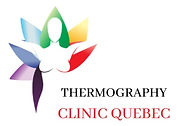
What Is Thermography?
Medical thermography is a non-invasive imaging technique that uses infrared technology to detect temperature differences on the surface of the body, which can aid in the early detection of abnormalities or diseases without the need for invasive procedures or ionizing radiation.

Everyone has the right to know the truth about their health. Rather than waiting for symptoms to appear and a disease process to be identified.
Thermography measures the heat coming from your body. Cancers create heat that can be imaged by digital infrared imaging. This is due to two separate factors:
1
The first is the metabolic activity of the tumour tissue as compared with the temperature of tissue adjacent to the tumour and in the opposite breast. By comparing the breast in question with the normal breast which acts as the patient’s own control, abnormal heat signatures associated with the metabolism of the tumour can be detected easily.
2
The second method of detection is due to the angiogenesis of the tumour. A substance released by cancerous tumours encourages the growth of blood vessels feeding the tumour's location. Moreover, the sympathetic nervous system, which normally controls regular blood vessels, basically paralyzes them, leading to vasodilation. The increase in blood in the area due to angiogenesis along with vaso-dilation simply results in greater heat, which may be captured using thermal imaging.

The Principle of Thermography
The principle of thermography is fairly clear.
This test is based on the theory that cancer cells require more oxygen-rich blood to proliferate as they multiply. The temperature around the tumour rises as blood flow to it increases.
When cancer is forming, it develops its own blood supply in order to feed its accelerated growth, a process known as malignant angiogenesis. The increased blood supply causes abnormal heat activity in the breast or other tissue which a specialized infrared camera can pick up.
The use of thermography is based on the idea that metabolic activity and vascular circulation are usually always higher in malignant tissue while cancer is developing than in healthy tissue.
Angiogenesis, or the development of new blood vessels, is required to maintain a tumour's growth as cancerous tumours increase circulation to their cells due to an ongoing requirement for nutrients.
Tumours, whether precancerous or malignant, require an abundant supply of nutrients, which can only be obtained through increased blood flow, which causes an increase in temperature.
A substance released by cancerous tumours encourages the growth of blood vessels feeding the tumour's location.
Malignant angiogenesis is the process through which a tumour forms its own blood supply to fuel its accelerated growth. Additionally, cells have the ability to begin this process long before they develop cancer.
The Standards We Are Following Include:
Clinical thermographers with certification are trained to scan patients following rigid guidelines created for the greatest patient compliance and outcomes.
The highest medical-grade resolution camera and the most innovative analytic software.
The scan interpretations by only board-certified medical doctors who are trained and certified in thermographic image analysis.

